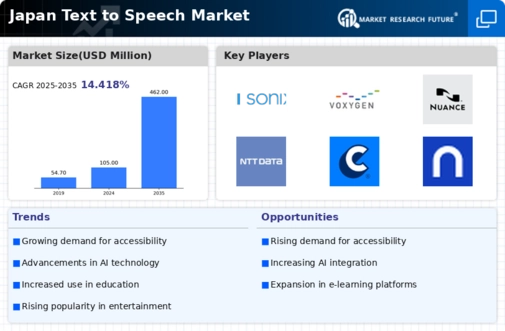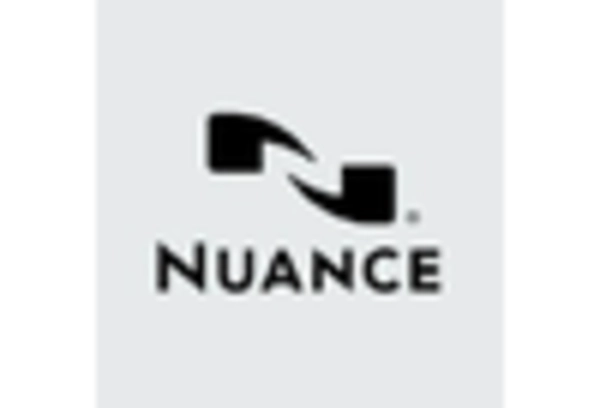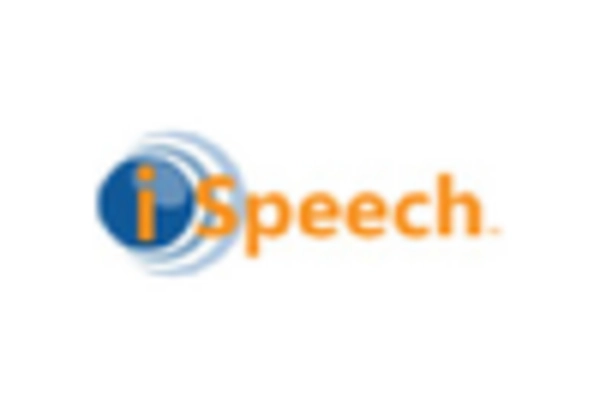The text to-speech market in Japan exhibits a dynamic competitive landscape, characterized by rapid technological advancements and a growing demand for personalized user experiences. Key players such as Google (US), Amazon (US), and Microsoft (US) are at the forefront, leveraging their extensive resources to innovate and expand their offerings. Google (US) focuses on enhancing its AI capabilities, particularly in natural language processing, which positions it as a leader in delivering high-quality, context-aware speech synthesis. Amazon (US), through its AWS platform, emphasizes scalability and integration, catering to a diverse range of applications from customer service to content creation. Meanwhile, Microsoft (US) is investing heavily in cloud-based solutions, aiming to integrate its text to-speech technology seamlessly into its suite of productivity tools, thereby enhancing user engagement and accessibility.
The business tactics employed by these companies reflect a strategic emphasis on localization and supply chain optimization. The market structure appears moderately fragmented, with a mix of established players and emerging startups. This fragmentation allows for a variety of innovative solutions, although the collective influence of major companies like IBM (US) and Nuance Communications (US) remains significant. These firms are actively pursuing partnerships and collaborations to enhance their technological capabilities and market reach, thereby shaping the competitive environment.
In October 2025, Google (US) announced a partnership with a leading Japanese telecommunications company to develop localized text to-speech solutions tailored for the Japanese market. This strategic move is likely to enhance Google's competitive edge by providing more culturally relevant and contextually accurate speech synthesis, thereby appealing to local businesses and consumers. Such collaborations may also facilitate the integration of advanced AI features, further solidifying Google's position in the market.
In September 2025, Amazon (US) launched a new suite of text to-speech tools specifically designed for the Japanese language, incorporating regional dialects and nuances. This initiative underscores Amazon's commitment to localization and its understanding of the unique linguistic characteristics of the Japanese market. By offering tailored solutions, Amazon (US) aims to capture a larger share of the market, particularly among businesses seeking to enhance customer interactions through voice technology.
In August 2025, Microsoft (US) unveiled an upgraded version of its Azure Cognitive Services, which includes enhanced text to-speech capabilities with improved voice quality and emotional expressiveness. This development is indicative of Microsoft's strategy to leverage AI advancements to provide more engaging user experiences. By focusing on emotional intelligence in voice synthesis, Microsoft (US) is likely to differentiate itself from competitors, appealing to sectors such as entertainment and education.
As of November 2025, the competitive trends in the text to-speech market are increasingly defined by digitalization, AI integration, and a growing emphasis on sustainability. Strategic alliances among key players are shaping the landscape, fostering innovation and enhancing service offerings. The shift from price-based competition to a focus on technological differentiation and supply chain reliability is evident. Companies are likely to prioritize innovation and user-centric solutions, suggesting that the future of competition will hinge on the ability to deliver unique, high-quality experiences rather than merely competing on cost.

















Leave a Comment